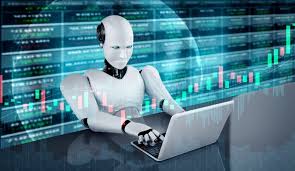In the ever-evolving landscape of financial markets, the advent of technology has revolutionized trading practices. Among these innovations, forex robot stand out as a pinnacle of automation and efficiency. These computer programs, also known as Expert Advisors (EAs), are designed to execute trades in the foreign exchange (Forex) market on behalf of traders. Their rise in popularity stems from their ability to analyze vast amounts of data, make split-second decisions, and execute trades with precision, all without human intervention.
Understanding Forex Robots:
Forex robots are essentially algorithmic trading systems that are programmed to follow specific trading strategies. They operate based on predefined rules and parameters, often incorporating technical indicators, price action patterns, and other quantitative metrics to identify trading opportunities. These robots can operate 24/7, tirelessly scanning the market for favorable setups and executing trades according to their programmed instructions.
Advantages of Forex Robots:
- Emotion-Free Trading: One of the most significant advantages of Forex robots is their ability to eliminate emotional biases from trading decisions. Human traders are often prone to emotional impulses such as fear, greed, or hesitation, which can lead to irrational decision-making and trading errors. Forex robots, on the other hand, operate purely based on logic and predefined rules, ensuring consistent and disciplined trading.
- Speed and Efficiency: Forex robots can analyze market conditions and execute trades at lightning speed, far surpassing the capabilities of human traders. They can process vast amounts of data in milliseconds, enabling them to capitalize on fleeting opportunities and execute trades with precision.
- 24/7 Operation: Unlike human traders who need rest, Forex robots can operate around the clock, taking advantage of trading opportunities in different time zones and markets. This continuous operation ensures that no lucrative trade goes unnoticed, maximizing profit potential.
- Backtesting and Optimization: Forex robots can be backtested using historical market data to assess their performance under various market conditions. Traders can optimize their robots by fine-tuning parameters and adjusting strategies based on past performance, thereby enhancing their effectiveness in live trading.
Challenges and Risks:
While Forex robots offer numerous advantages, they are not without challenges and risks:
- Over-Optimization: Optimizing a Forex robot based on historical data runs the risk of overfitting, where the robot performs exceptionally well on past data but fails to generalize to future market conditions. Traders must strike a balance between robustness and optimization to ensure their robots perform effectively in live trading.
- Market Volatility: Sudden changes in market conditions or unexpected events can pose challenges for Forex robots, as they may struggle to adapt to rapidly evolving situations. Traders need to monitor their robots closely and intervene when necessary to prevent significant losses during periods of high volatility.
- Dependency on Technology: Forex robots rely heavily on technology, including internet connectivity, hardware reliability, and software stability. Any disruptions or technical issues can affect their performance and potentially lead to missed trading opportunities or execution errors.
- Lack of Human Judgment: While the absence of emotional biases is a strength of Forex robots, it can also be a limitation. These robots may overlook qualitative factors or market nuances that human traders would consider, potentially leading to suboptimal decision-making in certain situations.
The Future of Forex Trading:
Despite the challenges, Forex robots continue to evolve and play a significant role in the financial markets. Advancements in artificial intelligence, machine learning, and algorithmic trading algorithms are further enhancing the capabilities of these robots, making them more adaptive and intelligent.
In the future, we can expect to see Forex robots becoming even more sophisticated, incorporating advanced predictive analytics and natural language processing capabilities to interpret news events and sentiment analysis. Additionally, as blockchain technology and cryptocurrencies gain traction, Forex robots may expand their scope to include trading in these emerging asset classes.
In conclusion, Forex robots represent a paradigm shift in currency trading, offering unparalleled speed, efficiency, and automation. While they are not immune to risks and challenges, their potential to revolutionize the way we trade currencies is undeniable. As technology continues to advance, Forex robots will likely play an increasingly integral role in the financial markets, empowering traders with innovative tools to navigate the complexities of global currency trading.
